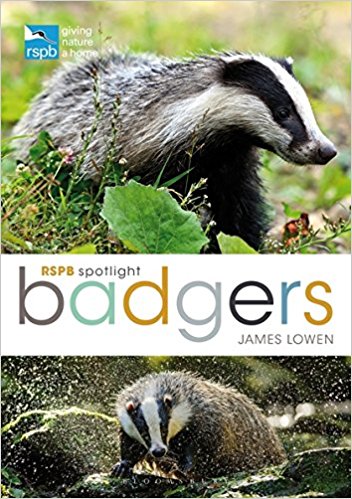Roadside Reflectors
| RSPB Spotlight on Badgers book |
 |
James
Lowen explores the lives of badgers and their communal
living, feeding habits and threats to their conservation. Click
here to buy:
Paperback edition
Kindle edition
|
Being creatures of habit, badgers often patrol their territories
along long-established boundaries and paths. Accordingly, one of the most
dangerous areas for badgers is where their paths cross busy roads and
railways.
In such locations Badger Groups
have often trialled various types of roadside reflector to try and reduce
the number of fatal and serious badger casualties. Reducing the number of
badger casualties can have a great impact on human accidents too. Whilst
the act of running over a badger in a modern car, would not generally
cause the car to flip over; the actions taken by a driver to avoid hitting
a badger may result in an accident. In avoiding the badger, the vehicle
may swerve into the path of other traffic or crash into embankments,
barriers or street furniture. Hitting a badger on a motorcycle would
almost certainly result in the bike crashing; with possible serious or fatal
consequences for the motor-cyclist.
If roadside reflectors may be a solution at a particular
accident blackspot, the first step should be to arrange a meeting with the
relevant "owner" of the road, such as the local authority's
traffic management or roads department. The reason you need to consult the
"officials" is that it is illegal to install roadside
reflectors, unless you are permitted to do so. The benefit, is that if you
persuade the officials of the need to do so; they may be willing to do the
work for you. If this is the case, you can be fairly certain that the
installation will be within the law and will comply with the Traffic Signs Regulations and General Directions, and
that they have informed the gas, electricity, water and telephone companies, to ensure that no interference
would be caused to underground pipes or cables.
If you simply installed a solid roadside reflector without a
permit, that reflector could be removed by the authorities; and you could
be liable for damages if it was a contributory factor in an accident if a
vehicle was damaged or some-one was injured.
The reflectors used for badgers have tended to be wooden posts
about 30cm high with a dimpled reflector which reflects the vehicle lights
away from the road. In doing this, it is hoped that the badgers get some
advanced warning of a vehicle approaching; and therefore have a vital few
extra seconds to get clear of the road. To maximize the chances of them
working the reflectors should be sited at regular intervals (e.g. 15
metres); and they should be staggered along the side of the road.
Being only 30cm high, the wooden posts can soon become covered
by vegetation; so they are normally surrounded by a thick layer of roofing
felt which suppresses the growth of vegetation. This leaves a
"dead" area around the post, which means they are less likely to
be knocked over or damaged during roadside maintenance and grass-cutting
operations.
However, the vegetation around the reflectors does need
to kept cut very short so light can reach the reflectors and be scattered
around.
In addition, as the reflectors themselves are only 30cm
off the ground, they can quickly become dirty from passing traffic and
needed to be cleaned regularly.
Originally roadside reflectors were designed to deter
deer from remaining on the carriageway for too long; and there is some
evidence that they do work for deer quite well. The case of badgers is a
little more problematic; and they will be unlikely to reduce badger
casualties to zero.
Again, with badger-related matters, a research study
would be very useful; as it would allow different types of reflector to be
tested against one another; and realistic figures obtained as to the
number of accidents avoided and the number of badgers lives saved.
Overall, at known badger crossing points, where the
number of casualties is high; and the number of accidents is high (or
their is a risk of a catastrophic accident), we would advise that they
should be trialled to test their efficiency. However, we would urge all Badger Groups
to keep detailed records to make it easier for other to learn about their
strengths and weaknesses.

|
